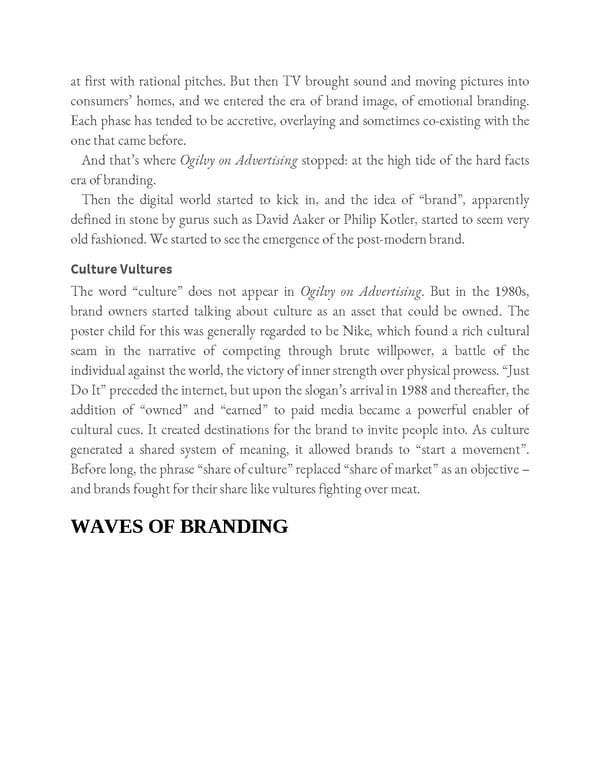at first with rational pitches. But then TV brought sound and moving pictures into consumers’ homes, and we entered the era of brand image, of emotional branding. Each phase has tended to be accretive, overlaying and sometimes co-existing with the one that came before. And that’s where Ogilvy on Advertising stopped: at the high tide of the hard facts era of branding. Then the digital world started to kick in, and the idea of “brand”, apparently defined in stone by gurus such as David Aaker or Philip Kotler, started to seem very old fashioned. We started to see the emergence of the post-modern brand. Culture Vultures The word “culture” does not appear in Ogilvy on Advertising. But in the 1980s, brand owners started talking about culture as an asset that could be owned. The poster child for this was generally regarded to be Nike, which found a rich cultural seam in the narrative of competing through brute willpower, a battle of the individual against the world, the victory of inner strength over physical prowess. “Just Do It” preceded the internet, but upon the slogan’s arrival in 1988 and thereafter, the addition of “owned” and “earned” to paid media became a powerful enabler of cultural cues. It created destinations for the brand to invite people into. As culture generated a shared system of meaning, it allowed brands to “start a movement”. Before long, the phrase “share of culture” replaced “share of market” as an objective – and brands fought for their share like vultures fighting over meat. WAVES OF BRANDING
 Ogilvy on Advertising in the Digital Age Page 102 Page 104
Ogilvy on Advertising in the Digital Age Page 102 Page 104